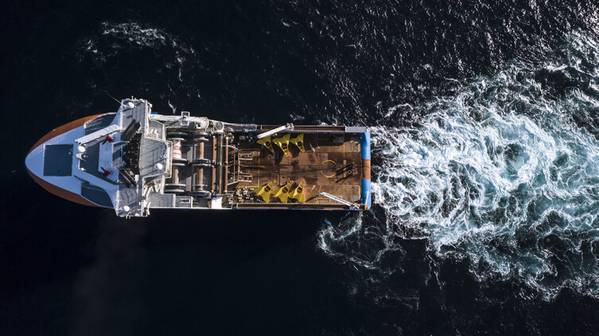
Global floating wind capacity will have grown from less than 200 MW at the end of 2022 to around 61 GW of grid connected capacity by 2035. This activity will require over $250 billion in capital expenditure. Over 75% of the forecast activity is expected to come from four countries. The global forecast translates demand to a requirement to pre-lay more than 6,000 mooring spreads within the forecast period and the hook-up of around 5,400 turbines. The available market for vessel owners, ranging from pure T&I to full floater EPCI scopes of work, amounts to $28-145 billion in the forecast period. These are the findings in the latest Intelatus Global Partners report addressing the floating wind turbine installation market.
The 180+ page report presents our analysis and forecast of the floating offshore wind turbine installation vessel market through 2035.
First, we provide an overview of the industry and our assessment of the underlying market drivers likely to prevail through the 2035 forecast period. Then, we provide our forecast for floating offshore wind turbine installation vessel demand. Next, we profile the mooring pre-lay, towing and hook-up vessel supply side and analyze the supply and demand balances through the forecast period. We then move on to discuss the financial case for new buildings and what floating wind turbine installation vessels will look like. Finally, we present several case studies of existing floating wind projects.
We find that the main vessel category that will be deployed to pre-lay, tow and hook the majority of floating wind turbines will be anchor handlers. Of the today’s 2,400 or so anchor handler fleet less than 50 are identified as suitable and efficient for floating wind projects, an even so many of these lack one or two of the key technical attributes that will be required for commercial scale wind farms. Growing oil & gas activity is reducing the available supply of suitable vessels.
We also report that subsea construction support vessels will also be deployed to support floating wind projects, although only close to 85 out of around 500 subsea vessels feature the capabilities required by floating wind projects. Further, given the high forecast utilization of these vessels on oil & gas projects, limited spare vessel capacity is forecast.
There has been no building of very large anchor handlers in recent years and those that are active have mainly been built to service oil & gas drilling rigs and floating production systems. None have been built with floating wind in mind and many of the existing vessels lack one or several of the features required for efficient floating wind project delivery.
Growing competition from both oil & gas and floating wind segments for a limited supply creates the conditions where new building can be discussed. This comes at a time when several designs are emerging for anchor handlers specifically designed with commercial scale floating wind in mind.
We forecast a vessel building opportunity amounting to as much as $12 billion in the short-medium term.
For more information, contact [email protected].